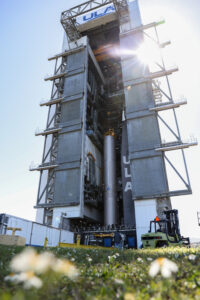
NASA, Boeing, and ULA (United Launch Alliance) are readying the rocket that will launch the first crewed flight of the Starliner spacecraft to the International Space Station as part of the agency’s Commercial Crew Program.

The ULA Atlas V rocket was moved into the company’s Vertical Integration Facility at Space Launch Complex-41 at Cape Canaveral Space Force Station in Florida, which starts the preparations for its stacking operations ahead of NASA’s Boeing Crew Flight Test.
The rocket’s main stage was transferred from the nearby Advanced Spaceflight Operations Center to the integration facility Wednesday, Feb. 21, where it will await integration with the rocket’s upper Centaur stage and Starliner. The spacecraft will carry NASA astronauts Suni Williams and Butch Wilmore to the orbiting laboratory for a short stay of about one to two weeks before returning to a landing site in the southwest United States.
The mission will test the end-to-end capabilities of the Starliner system, including launch, docking, and a return to Earth. After successful completion of the mission, NASA will begin the final process of certifying Starliner and its systems for crewed rotation missions to the space station.
NASA and Boeing are targeting no earlier than late April for launch. Starliner completed two uncrewed flight tests, including Orbital Flight Test-2, which docked to the space station on May 21, 2022, and provided valuable data leading up to its first crewed flight.
Details about the mission and NASA’s Commercial Crew Program can be found by following the commercial crew blog, X, and Facebook.
